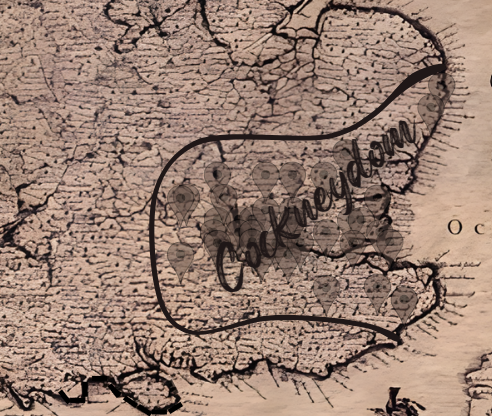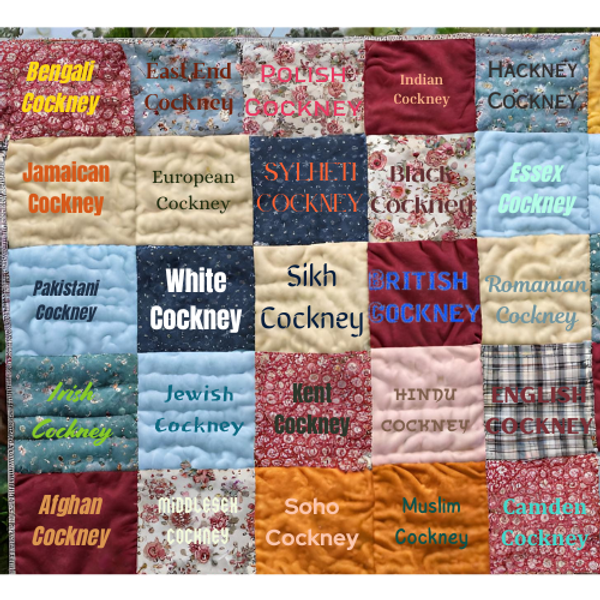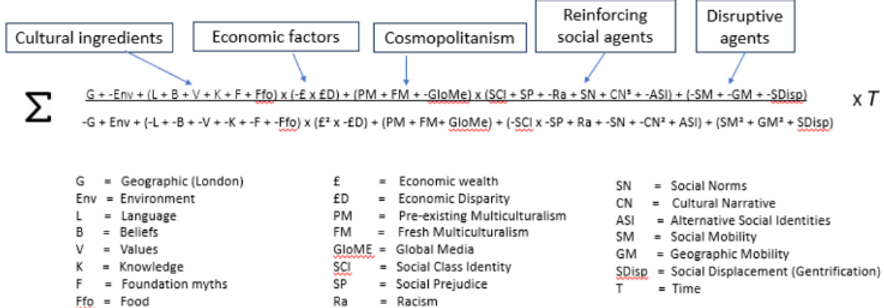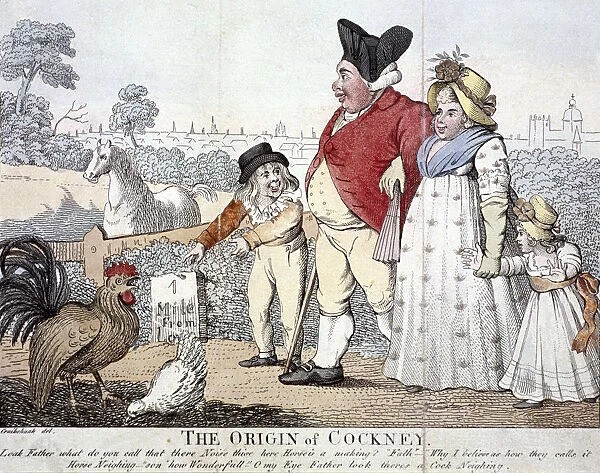
Surprisingly, Cockney originally meant someone who was posh.
The earliest citation, in Langland’s poem ‘Piers Plowman’, (1390), refers to a misshapen egg, alluding to wealthy, over-indulged people of the city, sheltered from hard countryside toil.
In the 1700s emerging middle-class lifestyles gave rise to a self-help industry with elocutionists advising people on how to attain higher social status which made it necessary to identify working-class behaviours to avoid. Adopting ‘proper speech’ was targeted as a way to ascend to the middle class.
In the 19th century, popular authors like Dickens and Thackeray followed the lead of elocutionists’ guides (and drew on the public understandings of the social characteristics of varieties of London English) by assigning socially salient features of Cockney to working-class characters. Their characterisations reinforced the popular conceptualisation of Cockney as something distinctively working class or ‘non-posh’.
Do you have to be born ‘within the sound of Bow Bells’?
Bow Bells were cast over 200 years after the term Cockney was first used.
The famous Bow-bell-birth definition of Cockney is attributed to a 1571 sermon by J. Bridges: ‘We are thorough out all the Realme called cockneys that are borne in London, or in the sounde of Bow bell’. In other words, ‘people in England call Londoners “Cockneys”’. In 1571, St. Mary-le-Bow would have been a common reference point at the centre of London. (The East End was largely unpopulated).. ‘Born in the sound of Bow bell’ was almost certainly not a way to distinguish Cockneys from other Londoners. Today, Bridges might have said, ‘Londoners are born in the ULEZ’.
Unlike a land boundary clearly revealing if you are in or outside, defining an identity by an imprecise audio boundary automatically creates ambiguity. Modern-day sound pollution limits their audible reach, and also did not ring between 1941 to 1961 because of war damage. Some also mistakenly assume that Bow Bells are in Bow, rather than St Mary-le-Bow church, in London’s city centre.
The 20th century witnessed a massive outward migrations from traditional heartlands of Cockney communities.
Despite being well out of range of hearing Bow Bells they still retained, the language, cultural identity, and ways of thinking and doing that can be labelled ‘Cockney’.
Recognising the deep significance of the Bow bells as a cherished myth Cockney Cultures, acknowledging how the legend is essentially an emotional attachment of belonging to a place, rather than physically hearing the bells to define someone as being ‘Cockney’ Cockney Cultures proposes how ‘The sound of Bow Bells is heard through the heart’.
What is Cockney Today?
Our research projects with the University of Warwick and others reveal a Cockney self-identity containing ambiguities, and contradictions. We believe this is a result of the complexity, dynamism, and constant influx of new influences on Cockney culture combined with profound social and geographical mobility.

Cockneys fall into four main groups of people who have an affinity with the ‘non-posh Londoner’:
· Old School Cockney, featuring characteristics fossilised in mainstream media of Pearlies, pie’n’mash, rhyming slang, primarily found in an inner London heartland, particularly the East End.
· Cockney Diaspora by geography and generations, primarily found in a region across the South East of England called ‘Cockneydom’, defined by the core spread of pie’n’mash shops, with Bishops Stortford in the North, and across and down the East and South coasts.
· Cockney Diaspora by generations, second, third or more generation, yet retain an affection and affinity for their connection to their Cockney, non-posh Londoner ancestors.
New School Cockney, the latest generations of a constantly evolving and emerging culture, shaped by every new ‘non posh Londoner’ arrival leaving their imprint on our common shared culture.
Our research projects with the University of Warwick and others reveal a Cockney self-identity containing ambiguities, and contradictions. We believe this is a result of the very complexity, profound social and geographical mobility, and constant influx of new influences on Cockney culture combined with.
We created the tool, called the ‘Cockney Formula’ that identifies key inter-related components that help shape Cockney identity, visualised below.

You can see it is massively complicated.
Maybe, we should stick with the definition proposed by comedian Arthur Smith of Cockney being the ‘non-posh Londoner’
What sort of Cockney are you? What’s your affinity with the ‘non-posh Londoner’?
